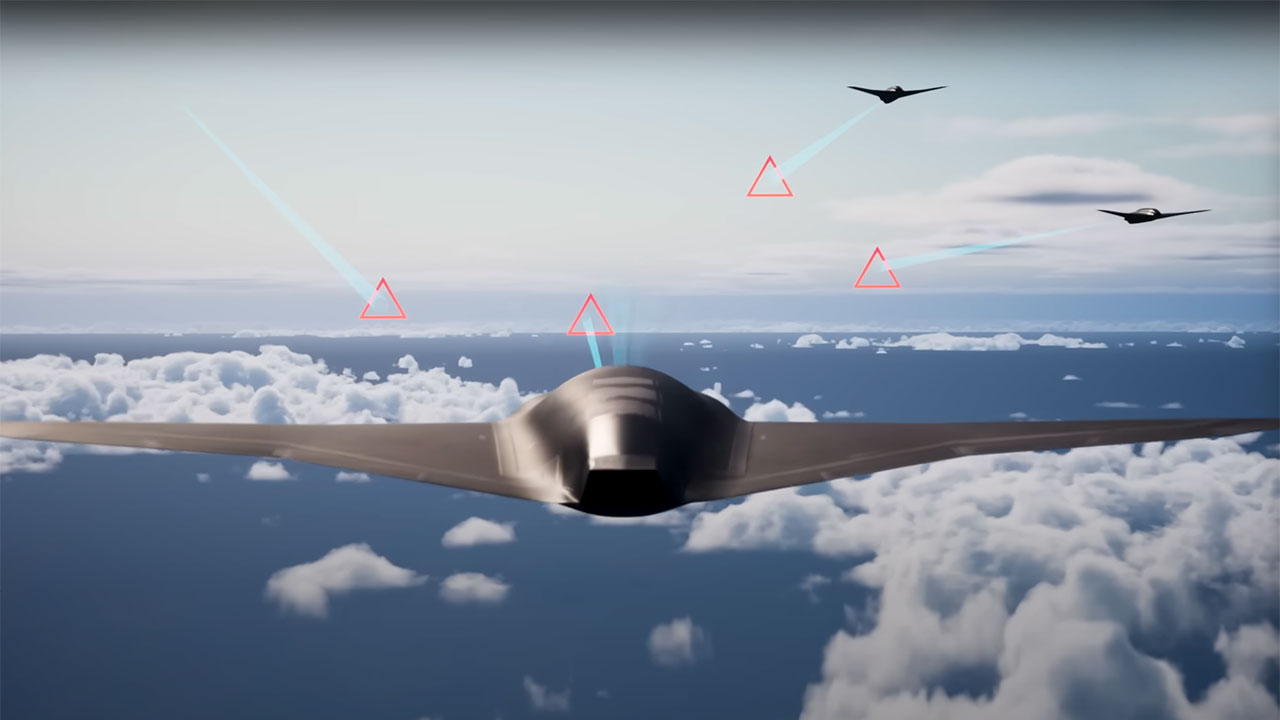
Lockheed Martin’s Skunk Works division has recently unveiled a new stealth combat drone named “Vectis.” This development significantly advances the capabilities of unmanned aerial combat technology.
The Innovative Vectis Stealth Combat Drone

The Vectis stealth combat drone, as revealed by Lockheed Martin’s Skunk Works, is a testament to the advancements in unmanned aerial combat technology. This drone is equipped with advanced features and capabilities that set it apart from its counterparts. According to AeroTime Aero, the Vectis drone is designed with a focus on stealth, making it a formidable tool in aerial combat.
Stealth technology is a critical component of modern warfare, and the Vectis drone is no exception. As reported by TWZ, the drone’s stealth capabilities make it a powerful asset in aerial combat scenarios, allowing it to evade enemy radar systems and carry out missions undetected.
Further details from AeroTime Aero highlight the Vectis drone’s advanced sensor systems and precision strike capabilities. These features, combined with its stealth technology, make the Vectis drone a versatile tool capable of carrying out a wide range of missions. Its sensor systems provide real-time data, enabling rapid decision-making and enhancing the effectiveness of operations.
Moreover, as TWZ reports, the Vectis drone’s design incorporates cutting-edge materials and technologies that reduce its radar cross-section. This makes it even harder for enemy radar systems to detect, further enhancing its stealth capabilities. The drone’s design also allows for a high degree of maneuverability, enabling it to navigate complex environments with ease.
Role of Lockheed Martin’s Skunk Works

Lockheed Martin’s Skunk Works division is renowned for its innovative projects and advancements in aviation technology. According to Fox Business, the division has been instrumental in the development of several groundbreaking aircraft, and the Vectis drone is the latest addition to its impressive portfolio.
The Vectis drone fits perfectly into Skunk Works’ broader mission and strategy. As reported by AVweb, the drone is a testament to Skunk Works’ commitment to pushing the boundaries of aviation technology and its continuous efforts to develop advanced combat solutions.
According to Fox Business, Skunk Works’ role in the development of the Vectis drone extends beyond its technical design. The division also played a crucial role in strategizing its operational use, considering factors such as mission requirements, potential threats, and the evolving landscape of aerial warfare. This holistic approach ensures that the Vectis drone is not just technologically advanced, but also strategically effective.
As AVweb notes, Skunk Works’ dedication to innovation is evident in the Vectis drone’s development process. The division employed a rapid prototyping approach, allowing for quick iterations and adjustments based on testing feedback. This agile development method ensures that the drone remains at the forefront of technological advancements, ready to meet the ever-changing demands of modern warfare.
Implications for the Future of Aerial Combat

The introduction of the Vectis drone could significantly change the landscape of aerial warfare. According to DroneXL, the drone’s advanced features and stealth capabilities could redefine how missions are carried out, potentially giving militaries a significant advantage in combat scenarios.
However, the increasing use of drones in combat scenarios also presents potential challenges. As noted by TWZ, while drones like Vectis can carry out missions without risking human lives, their use raises questions about the ethics of unmanned warfare and the potential for misuse. Despite these challenges, the benefits of drones in combat scenarios, such as their ability to carry out missions undetected, cannot be overlooked.
As DroneXL suggests, the Vectis drone’s introduction could lead to a shift in military strategy. Its advanced capabilities could encourage a greater reliance on unmanned systems, potentially reducing the need for manned aircraft in high-risk scenarios. This shift could result in significant cost savings, as well as a reduction in risk to human life.
However, as TWZ points out, the rise of unmanned systems also brings new challenges. For instance, the increased use of drones could lead to a greater risk of cyber attacks, as adversaries may attempt to hack into these systems. Additionally, the legal and ethical implications of drone warfare continue to be a topic of debate, with concerns about accountability and the potential for collateral damage. Despite these challenges, the potential benefits of drones like Vectis in modern warfare are undeniable.